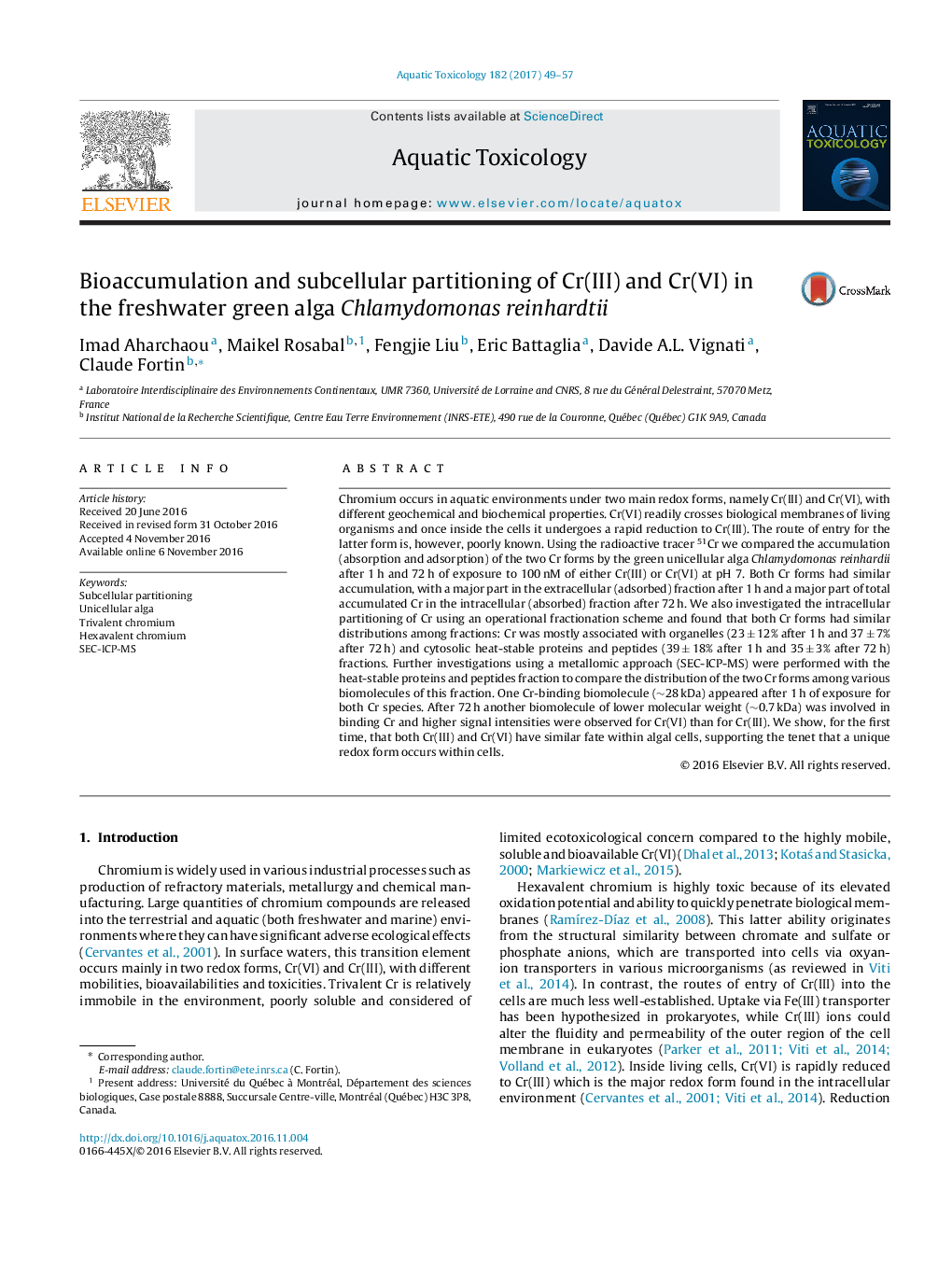| Article ID | Journal | Published Year | Pages | File Type |
|---|---|---|---|---|
| 5764339 | Aquatic Toxicology | 2017 | 9 Pages |
Abstract
Chromium occurs in aquatic environments under two main redox forms, namely Cr(III) and Cr(VI), with different geochemical and biochemical properties. Cr(VI) readily crosses biological membranes of living organisms and once inside the cells it undergoes a rapid reduction to Cr(III). The route of entry for the latter form is, however, poorly known. Using the radioactive tracer 51Cr we compared the accumulation (absorption and adsorption) of the two Cr forms by the green unicellular alga Chlamydomonas reinhardii after 1 h and 72 h of exposure to 100 nM of either Cr(III) or Cr(VI) at pH 7. Both Cr forms had similar accumulation, with a major part in the extracellular (adsorbed) fraction after 1 h and a major part of total accumulated Cr in the intracellular (absorbed) fraction after 72 h. We also investigated the intracellular partitioning of Cr using an operational fractionation scheme and found that both Cr forms had similar distributions among fractions: Cr was mostly associated with organelles (23 ± 12% after 1 h and 37 ± 7% after 72 h) and cytosolic heat-stable proteins and peptides (39 ± 18% after 1 h and 35 ± 3% after 72 h) fractions. Further investigations using a metallomic approach (SEC-ICP-MS) were performed with the heat-stable proteins and peptides fraction to compare the distribution of the two Cr forms among various biomolecules of this fraction. One Cr-binding biomolecule (â¼28 kDa) appeared after 1 h of exposure for both Cr species. After 72 h another biomolecule of lower molecular weight (â¼0.7 kDa) was involved in binding Cr and higher signal intensities were observed for Cr(VI) than for Cr(III). We show, for the first time, that both Cr(III) and Cr(VI) have similar fate within algal cells, supporting the tenet that a unique redox form occurs within cells.
Related Topics
Life Sciences
Agricultural and Biological Sciences
Aquatic Science
Authors
Imad Aharchaou, Maikel Rosabal, Fengjie Liu, Eric Battaglia, Davide A.L. Vignati, Claude Fortin,
